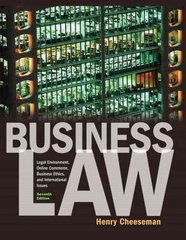


Thefoiiowing information is to be used for Questions 12,13, and 14' As Toronto gets more and more congested, some have chosen to build houses further north. Residents of some old ntario communities are dismayed to see land formerly used for hiking and camping being sold for building lots. The residents' association in Masseyville propose raising money from all homeowners to buy hikingiskiing land from the heirs of orginal settlers; land that would otherwise he sold to housing developers. Fifty (ll) local homeowners will participate. The best estimate of each (identical) homeowner's willingness-to-pay {marginal benet) function is Pu = ll (ll.5)L where L is number of units of land purchased for preservation, H = 1, 2, 3,...,5l] represents Homeowner 1, Homeowner 2, etc. Landowners have been offered large payments if housing developers can acquire large amounts of land, but much smaller payments if only small parcels of land are sold to developers. Thus, the marginal cost to the community of buying land to preserve as wilderness rises with amount purchased. The total cost of buying L unit of land can be approximated as TC(L) = 1,6llXL + 25L1 12. What is the Pareto-efficient amount of land preserved in Masseyville? A. Fewer than 5 units B. At least 5 units but fewer than 10 units C. At least 10 units but fewer than 15 units D. At least 15 units but fewer than 20 units E. At least 20 units 13. What is gross benefit to a typical resident from preserving the optimal amount of land? A. Less than $500 B. At least $500 but less than $1,000 C. At least $1,000 but less than $1,500 D. At least $1,500 but less than $2,000. E. At least $2,00014. What is the net benefit to all 50 residents from preserving the optimal amount of land? A. Less than $5,000 B. At least $5,000 but less than $7,500 C. At least $7,500 but less than $10,000. D. At least $10,000 but less than $12,500 E. At least $12,500The following information is to be used for Questions 15 and 16 The tin producer Soci-Etain has acquired rights to a deposit of tin in Peru. According to the company geologists, there are 50,000 units of tin in the deposit. The estimate of the cost of extraction and smelting of the tin in each period is C(Y,)=30x Y, +0.003x Y, , where Yr represents number of units of tin extracted/smelted in period 't = 0, 1, 2...' The world market price of a unit of tin is $150. This is not expected to change for at least five years. The return (proxy for interest rate) that Soci-Etain can earn on its other assets around the world is 4%. 15. If Soci-Etain has a only a two-year lease on the deposit in Peru, how much of the tin will it abandon at the end of the lease? A. None of the tin will be abandoned, all will be extracted B. Some of the tin, but fewer than 4,000 units will be abandoned C. At least 4,000 units but fewer than 8,000 units will be abandoned D. At least 8,000 units but fewer than 12,000 units will be abandoned E. At least 12,000 units (12,000 or more) will be abandoned16. Which of the following changes will REDUCE the amount of tin ultimately abandoned (will INCREASE the amount extracted) from the deposit in Peru? A. Return on other assets (interest) decreases to 3% B. Price of tin falls to $120 C. Return on other assets (interest) increases to 5% D. Cost of extraction/smelting rises to C(Y,)=40xY, +0.004x Y E. Lease on the deposit is increased from two years to three years














